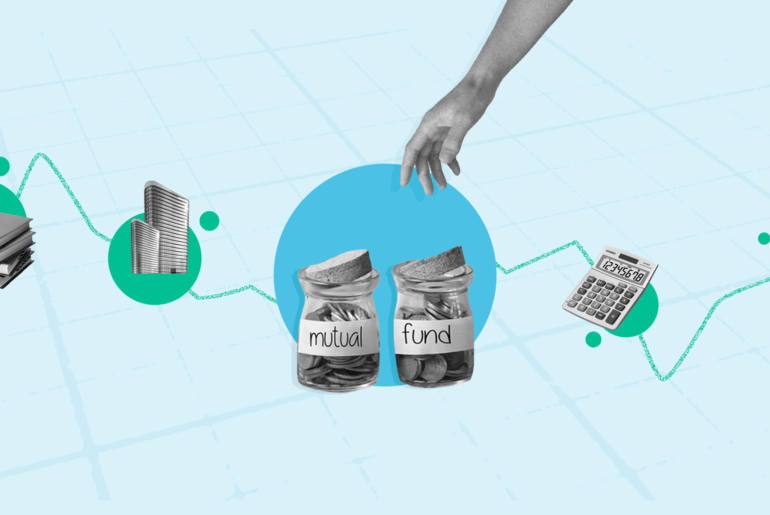Last Updated on May 9, 2025 by vanessa sequeira
Gilt funds are different types of mutual fund schemes with different risk-return profiles. They are a type of mutual fund investment that are debt-oriented, thereby protecting your investments from market volatility. Let’s understand the concept of gilt funds in detail and find out which are the best gilt funds in India.
Table of Contents
List of Top Gilt Funds in India
| Name | Sub Category | AUM (Cr.) | CAGR 3Y (%) | Expense Ratio (%) |
| Bandhan G-Sec-Constant Maturity Plan | Gilt – Long Term Fund | 355.96 | 9.55 | 0.14 |
| SBI Magnum Gilt Fund | Gilt – Short & Mid Term Fund | 11,954.06 | 9.51 | 0.46 |
| SBI Magnum Constant Maturity Fund | Gilt – Long Term Fund | 1,885.69 | 9.46 | 0.31 |
| Bandhan G-Sec-Invest | Gilt – Short & Mid Term Fund | 3,105.99 | 9.44 | 0.52 |
| DSP Gilt Fund | Gilt – Short & Mid Term Fund | 1,736.69 | 9.44 | 0.56 |
| ICICI Pru Constant Maturity Gilt Fund | Gilt – Long Term Fund | 2,530.86 | 9.44 | 0.23 |
| Tata Gilt Securities Fund | Gilt – Short & Mid Term Fund | 1,147.30 | 9.37 | 0.29 |
| Kotak Gilt Fund-PF&Trust | Gilt – Short & Mid Term Fund | 3,934.15 | 9.29 | 0.47 |
| Kotak Gilt Fund | Gilt – Short & Mid Term Fund | 3,934.15 | 9.28 | 0.47 |
| Aditya Birla SL G-Sec Fund | Gilt – Short & Mid Term Fund | 1,987.19 | 9.17 | 0.49 |
Disclaimer: Please note that the above table is for educational purposes only, and is not recommendatory. Please do your own research or consult your financial advisor before investing.
Note: The data on this list of gilt funds is from 7th May 2025 and derived using Tickertape Mutual Fund Screener
What Are Gilt Funds?
Gilt funds are debt mutual funds that invest at least 80% of their portfolio in government securities that have a fixed rate of interest. Gilt funds are open-ended mutual funds which means that you can invest in them anytime that you want to and also redeem the fund at your discretion.
Gilt funds are open-ended mutual funds that invest at least 80% of their portfolio in government securities having a fixed rate of interest. Click To TweetFeatures Of Gilt Funds
After looking at gilt fund meaning, let’s look at the salient features of gilt funds. Here are the notable ones:
- Low Credit Risk: Investment in gilt funds carry minimal credit risk because they invest exclusively in government securities. Since the government guarantees repayment, the risk of default is negligible.
- Fairly Stable Returns: These funds are not subject to credit volatility, and the government securities they invest in offer a fixed rate of return, providing a sense of predictability. However, all investments are subject to market risk and returns are not guaranteed.
- Flexible Investment Options: Investors can opt for either a lump sum investment or invest systematically through a SIP (Systematic Investment Plan), depending on their financial goals and preferences.
How Do Gilt Funds Work?
Whenever the government needs funds for its operations, it asks RBI to help generate the required funds. RBI issues bonds and securities, backed by the government, to institutional investors like banks and mutual funds.
An Asset Management Company (AMC) that issues debt gilt mutual funds, pools money from investors looking to invest in government securities. Thereafter, at least 80% of the pooled corpus is invested in the government securities that the RBI issues. The securities pay interest that adds to the portfolio’s value and generates returns for the investors.
Types of Gilt Funds
- Gilt funds with varying maturities: These invest in government securities with different maturity periods, allowing for a diversified maturity profile within the portfolio.
- Gilt funds with constant maturity: These funds invest primarily in government securities that have a fixed maturity period, usually 10 or 15 years. For example, in a 10-year gilt fund, at least 80% of the portfolio is allocated to government securities maturing in 10 years.
Why Invest In Gilt Funds?
Now that you understand what gilt funds means, here are the benefits that the top gilt funds have to offer. These benefits include the following.
- Investment in government securities: Government bonds and securities issued by the RBI are not available for retail investors. So, if you want to invest in such securities which have a low to minimal risk, you need to invest through gilt mutual funds.
- Attractive returns: Government securities promise good interest income. As such, high-return gilt funds can offer attractive returns on your investment and help you create a corpus for your financial goals.
- Low exposure to risk: Being debt-oriented, debt gilt funds are not prone to the volatility of the equity market. As such, in uncertain times, when the equity market is volatile, low-risk gilt funds may offer good returns. Moreover, the credit risk is also low considering these funds are issued by the government where the risk of default is non-existential.
- Protection of invested capital: The money that you invest in gilt mutual funds for stability purposes does not erode due to market volatility. With a low-risk profile, gilt funds protect your invested capital against value erosion.
Who Should Invest In Gilt Funds?
When understanding what gilt funds are, you should also understand whether such funds fit your investment strategy or not. Gilt funds are suitable for your portfolio if you:
- Have a low appetite for risk
- Want exposure in government securities
- Want to diversify your portfolio for stability
Having a long-term perspective is beneficial if you want to invest in long-duration gilt funds since such funds can offer a good yield-to-maturity. So, assess your investment needs if you are choosing to invest in gilt funds and then invest in suitable funds.
Things To Keep In Mind When Investing In Gilt Funds
Here are a few points that you should keep in mind if you are choosing to invest in gilt funds:
Inherent interest rate risk
Though long-term gilt funds have minimal credit and volatility risk, they are still exposed to interest rate risks. If the interest rate of fixed-income investments rises, government securities would become less attractive since they would have a lower rate. This would cause a drop in the NAV of the fund.
Returns
In a bullish market, returns on equity would outperform those on gilt funds. The returns from high-performance gilt funds are attractive in a bear market when equity is suffering a fall. Moreover, if the interest rates in the economy are falling, gilt funds would offer higher returns and vice-versa.
Expense ratio
Like other mutual fund schemes, gilt funds also have an expense ratio associated with them. This ratio reduces the effective returns and so, you should look for funds that have a low expense ratio for maximum returns.
Investment horizon
Government securities are issued with a medium to long term tenure. As such, if you are investing in gilt funds, an investment horizon of three years and up is recommended.
Gilt funds perform better than equity in a bear market. They also yield higher returns when the interest rates in the economy are falling. Click To TweetTaxation Of Gilt Funds
Being debt mutual funds, gilt funds are subject to debt taxation. Returns earned from gilt funds are taxed in the following manner:
- Returns earned within 36 months of investment in the fund are called short-term capital gains. Such gains are added to your taxable income and taxed at your income tax slab rate.
- Returns earned after 36 months of investment are called long-term capital gains. Such gains are taxed at 12.5% without the benefit of indexation.
Summing it up
Gilt funds are mutual funds that invest primarily in government securities. They have a low-risk profile and give stable returns. When investing, understand gilt funds’ meaning and then invest in suitable funds to diversify your portfolio with exposure to quality government securities.
Frequently Asked Questions (FAQs) About Gilt Funds
1. What is a gilt fund?
A gilt fund is a type of mutual fund that primarily invests in government securities issued by the central or state governments. These funds carry minimal credit risk since they are backed by the government, making them suitable for conservative investors seeking stable returns.
2. Which gilt fund is best?
The best gilt funds depends on factors like historical performance, expense ratio, and fund manager expertise. Here are some of the best gilt funds accordingly to 3Y CAGR:
– Bandhan G-Sec-Constant Maturity Plan
– SBI Magnum Gilt Fund
– SBI Magnum Constant Maturity Fund
3. Is gilt fund better than FD?
Gilt funds can offer better returns than fixed deposits (FDs), especially in a falling interest rate environment. However, unlike FDs, they are subject to interest rate risk and market fluctuations, so they suit investors with a slightly higher risk appetite.
4. Are gilt funds tax free?
Gilt funds are not tax-free. They are subject to capital gains tax—short-term capital gains (if held for less than 3 years) are taxed as per your income slab, while long-term capital gains (after 3 years) are taxed at 20% with indexation benefits.
5. What is the risk of gilt debt funds?
The main risk in gilt funds is interest rate risk—when interest rates rise, the value of existing bonds falls, which can lead to short-term losses. Although they carry no credit risk, their NAV can be volatile due to changes in interest rates.
- Best Performing Index Funds in India (2025) - Jun 5, 2025
- Issue of Shares – Meaning, Types, Examples and Steps - Jun 4, 2025
- Banking Mergers in India – List of Merged PSU Banks, Advantages, and Challenges - Jun 3, 2025





